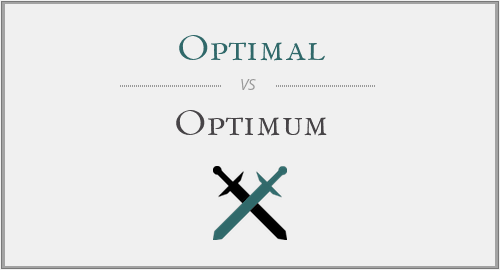Optimal vs. Optimum: Navigating Distinctions in Usage
Understanding the differences between "optimal" and "optimum" involves recognizing variations in usage and preference. This article aims to clarify the distinctions between "optimal" and "optimum," shedding light on their meanings, applications, and appropriate usage in different contexts.
Correct Usage:
Optimal:
"Optimal" is an adjective used to describe the most effective or favorable condition, choice, or amount in a given situation. It is commonly used in various fields, including science, engineering, and business, to denote the best possible outcome or solution.
Optimum:
"Optimum" is also an adjective with a similar meaning to "optimal." It is used to describe the most favorable conditions or the best possible level of something. While "optimal" is more widely accepted in modern usage, "optimum" is still considered correct and is used, especially in technical or formal contexts.
Meanings and Applications:
Optimal:
Use "optimal" when describing the most effective or advantageous condition, choice, or quantity in a specific context. "Optimal" is versatile and suitable for both formal and informal situations.
Optimum:
Use "optimum" when referring to the most favorable or best conditions, especially in technical or formal contexts. While less common in everyday language, "optimum" is still correct and may be preferred in certain disciplines.

Examples:
Correct: The scientist aimed to find the optimal conditions for the experiment.
Correct: The engineer sought to achieve optimum efficiency in the design.
Contextual Considerations:
Consider the level of formality and the specific context when choosing between "optimal" and "optimum." While "optimal" is widely accepted in everyday language, "optimum" may be favored in certain technical or formal settings.
Conclusion:
Navigating the distinctions between "optimal" and "optimum" involves understanding their similar meanings and usage preferences. Whether discussing efficiency in engineering or the best choice in everyday decisions, using the appropriate term enhances precision and clarity in communication.




Have a discussion about this article with the community:
Report Comment
We're doing our best to make sure our content is useful, accurate and safe.
If by any chance you spot an inappropriate comment while navigating through our website please use this form to let us know, and we'll take care of it shortly.
Attachment
You need to be logged in to favorite.
Log In